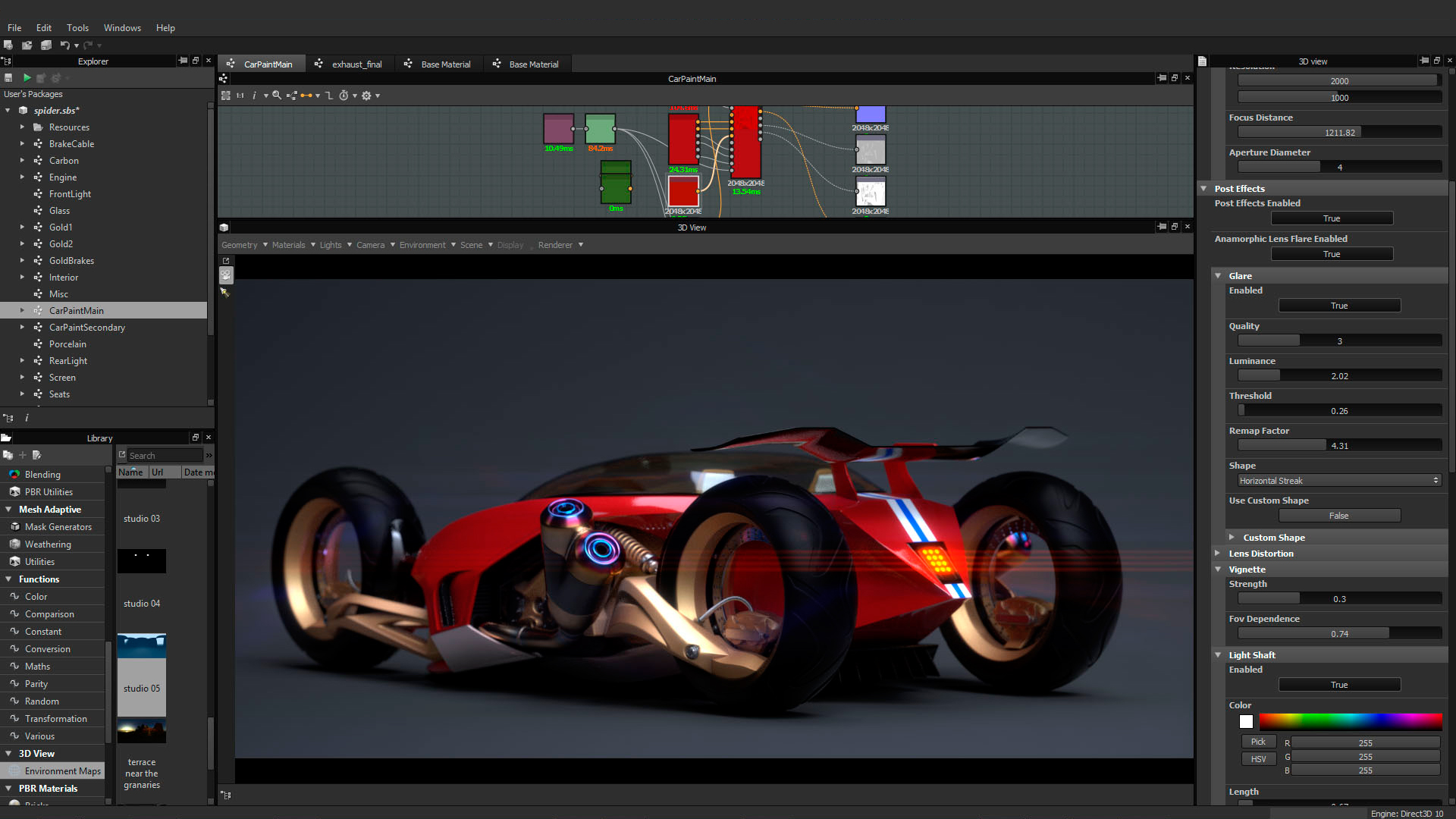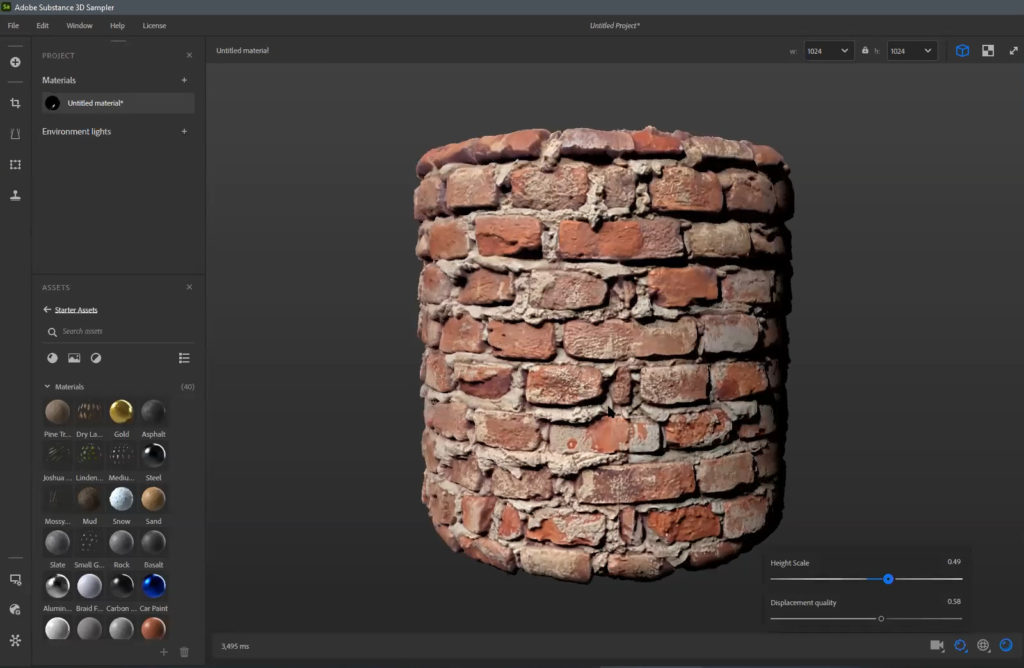
Now you’re ready to use this texture where ever you want. When done click on Import.Īs you can see Substance Painter has added the asset to the textures section and it also created a thumbnail for us. Also make sure to define the location where it should be added to: the “your_assets” library. Use the ‘Add resources’ option to add the. So, fire up Substance Painter and use the “Import Resources” option, either from the File menu, or by clicking the small + icon at the bottom of the Assets window: You would assume that it uses “My Documents\Adobe” just like Substance Painter does, but no… The export folder which we’re going to need here is located under: “My Documents\Allegorithmic\Substance Designer”. The first thing you need to know is where Substance Designer saves its exported data to. You can add nodes by either dragging them from the Library and dropping them onto the Graph window, you can also select some of the more commonly used nodes in the tool bar above the Graph window (those colored square icons?) and best of all: if you press the spacebar while having the Graph window selected you’ll get a search box which gives you quick access to all the nodes, just type part of the name and it’ll apply a filter for you.Īdding our (exported) texture to Substance Painter This will allow us to customize the way the node behaves.Īdding nodesTo get started we’ll need to add some nodes to our project. This is where we get to see the node properties as soon as we select one in the Graph window.

You can see a small warning sign here, just ignore that for now. In the upper left corner we can see the Explorer window this lists our project, its packages and the graphics that are part of it.Because I am still very excited about the whole thing I wanted to do something in return for the community, and thus we now have this guide.
#Substance 3d designer free
Available free of charge for non-commercial use… so why not use it? 😉Īnd of course, since this week (time of writing) I’m now also using Substance 3D Painter & Substance 3D Designer to further enhance my workflow. Fun fact: all screenshots in this guide have been processed and/or enhanced by IrfanView. Need to rescale an image? Need to blurr something out or make it fully unavailable to read? Need to highlight something? This is all you need. IrfanView: The swiss army knife for image processing.One of its key features is that it can be used as an insert filter within Photoshop Elements which makes it extremely easy to use. Aurora helps me to apply HDR technology and to enhance my renders. Aurora HDR: Ever since Iray and photorealism became a thing HDRI (“High Dynamic Range Images”) has become a standard to more dynamically enhance 3D renders they can be extremely useful as backdrops.Adobe’s organizer helps me to keep track of all my media files. to either fix or further enhance a render as soon as its done. Photoshop & Premiere Elements 2022: I use P.E.This is my big #2 because of “GoZ” this allows me to easily transfer meshes from Daz Studio into ZBrush and vice versa. ZBrush 2022: ZBrush is a “3D editor” it allows me to create or modify 3D meshes either by hard surface modelling or through sculpting.


Although dated as heck it’s something I still regulary use to generate clouds, terrains and backdrops. Bryce 7: Bryce is best described as a 3D environment fractal generator.

basically forms the center of my virtual home studio. to set up 3D sceneries by placing 3D figures and models and then generating a render from it, either through the 3Delight engine, Filiament engine or Iray.
#Substance 3d designer software
About me (for a bit of context)I’m a hobbyist 3D designer who got lucky enough to gain access to some professional 3D software environments, this includes the Substance software mentioned above, and I’ve been working with 3D for around 6 years now though only as one of my more serious hobbies.


 0 kommentar(er)
0 kommentar(er)
